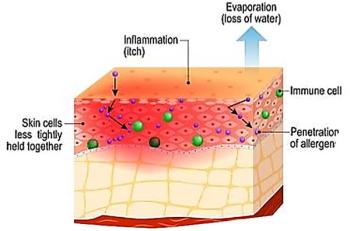
Opinion|Videos|April 17, 2025
Methods for Determining Atopic Dermatitis Severity in Clinical Practice
Author(s)Shawn Kwatra, MD , Carolyn Stolte, CRNP
Panelists discuss how various assessment tools like the IGA, EASI score, and BSA are used to determine the severity of atopic dermatitis and document findings for insurance purposes.
Advertisement
Episodes in this series

Video content above is prompted by the following:
Polling on Atopic Dermatitis Diagnostic Challenges
- Primary care physicians report key challenges in diagnosing atopic dermatitis:
- Difficulty differentiating from other skin conditions (60%)
- Limited access to dermatology support (47%)
- Lack of time for thorough assessment (37%)
- Insufficient knowledge about the disease
- Carolyn Stolte, CRNP, emphasized time constraints as a major barrier with 15-minute appointments covering multiple health concerns
- Carolyn Stolte, CRNP, highlighted that skin conditions often receive lower priority compared to cardiac, renal, and other systemic issues
- Importance noted of recognizing how atopic dermatitis impacts quality of life, mental health, sleep, and potentially other health parameters such as blood pressure
Determining Atopic Dermatitis Severity
- Key severity assessment tools discussed:
- IGA (Investigator’s Global Assessment): most important for documentation
- EASI (Eczema Area and Severity Index): calculator available online
- BSA (body surface area), using rule of nines
- SCORAD (combines BSA, intensity, symptoms, itch, and sleep)
- POEM (patient-reported symptom questionnaire)
- DLQI (Dermatology Life Quality Index)
- For insurance coverage documentation, requirements typically include:
- IGA score of 3-4
- BSA of at least 10%
- EASI score of approximately 16%
- Shawn Kwatra, MD, highlighted the Numeric Rating Scale (NRS) as a quick 10- to 20-second assessment tool:
- Asks patients to rate worst itch in past 24 hours on scale of 0-10
- Scores ≥7 correlate with severe disruptions in quality of life, sleep issues, and higher rates of anxiety/depression
Severity Assessment Details
- IGA scoring system detailed:
- 0 = Clear (no inflammatory signs)
- 1 = Almost clear (barely perceptible erythema, papules, slight lichenification)
- 2 = Mild (slight but definite erythema, papules, or lichenification)
- 3 = Moderate (clearly perceptible erythema, papulation, or lichenification)
- 4 = Severe (marked erythema, papulation, lichenification; widespread with possible oozing, crusting, infection)
- BSA calculation using rule of nines explained:
- Palm = 1%
- Head and neck = 9%
- Upper limbs = 9% each
- Trunk = 36%
- Genitalia = 1%
- Lower limbs = 18% each
- Both panelists emphasized documentation requirements for therapeutic coverage
Newsletter
Enhance your clinical practice with the Patient Care newsletter, offering the latest evidence-based guidelines, diagnostic insights, and treatment strategies for primary care physicians.
Advertisement
Latest CME
Advertisement
Advertisement
Trending on Patient Care Online
1
FDA Clears First At-Home Brain-Stimulation Device for Major Depression
2
10 Questions on The Holiday Spirit
3
Adult Stimulant Use Accounts for Most Recent Growth in ADHD Prescribing in Canada
4
Retatrutide Achieves Up to 28.7% Weight Loss and Marked Knee Pain Reduction in Phase 3 TRIUMPH-4 Trial
5


















































































































































































































































































